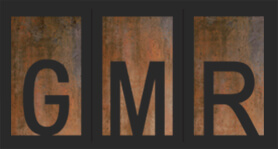In rush hour, Defendant intended to make a left turn at a busy traffic light-controlled intersection. While waiting in the intersection to make his turn, the light controlling Defendant’s direction of travel turned red. In an attempt to safely clear the intersection, Defendant began his left turn. As he did so, the passenger side of his vehicle was struck by Plaintiff, who was traveling in the opposite direction on his motorcycle. The significant impact totaled both vehicles, and caused Plaintiff to be thrown approximately 20 feet from his motorcycle. Plaintiff claimed to have entered the intersection on a green light.
An independent witness, who had stopped behind Defendant, testified that Defendant may have actually made his left turn on a yellow light, not a red light. Two independent witnesses, who were stopped in the lane to left of the lane Plaintiff was traveling in, testified that Plaintiff entered the intersection on a red light, and struck the side of Defendant’s car.
Plaintiff’s counsel argued that his client had the right of way, and that Defendant was negligent for turning left directly into his path of travel. On behalf of Defendant, Mr. Merrigan contended that Plaintiff’s own negligence in running a red light was the sole cause of the accident, and that Defendant was reasonably complying with his own duty to clear the intersection after being stranded in it with a red light controlling his direction of travel.
An orthopedic surgeon and a dentist testified that Plaintiff was diagnosed with abrasions on his face, lips, and right leg, fractures of seven teeth and chipping of several others, lumbrosacral neuritis, lumbar stenosis and herniations at L4-5 and L5-S1 with radiculopathy, a left thumb fracture; and a Grade 5 left shoulder AC joint separation. He underwent a surgical stabilization with hardware placement for his shoulder injury. Approximately three weeks later, he was diagnosed with an infection at the surgical site, and the infection was surgically irrigated and debrided. Several months later, a third shoulder surgery was performed to remove the surgical hardware. Plaintiff also had his seven allegedly fractured teeth extracted and had temporary dentures placed. He alleged the need for the future placement of dental implants to replace the missing teeth. Plaintiff also underwent a lumber laminectomy to correct his alleged lumbar injuries. Plaintiff also sought recovery of $269,452.39 in economic damages representing past and future medical expenses.
Mr. Merrigan conceded that Plaintiff’s shoulder injury and three shoulder surgeries were related to the accident, but argued that his low back problems were caused by prior injuries and preexisting degenerative disc disease and that his teeth extractions were necessitated by chronic severe periodontal disease. The testimony of an orthopedic surgeon and of a dentist was presented by the defense in support of Mr. Merrigan’s arguments.





